Halts are small, usually unstaffed stations. There are many of these on the Far North Line, some of which are request stops. They are ideal for walking and cycling.
Alness
Alness station is a small halt in the town centre. This stop is the best route to reach the nearby Fyrish Hill.
It is famous for the distinctive monument on its summit. It was built by Sir Hector Munro in 1782 to provide work for unemployed locals.
It represents the Gate of Negapatam, a port in Madras, India, which General Munro took for the British in 1781.
Make your way to the back of town and then take either route towards the B9176 road. There are a number of paths but none require anything more than a short walk along this reasonably quiet road.
You then make your way through forest tracks and start the ascent up Fyrish. The walk is easy and won’t take more than a few hours. Here is a walk description from Walkhighlands.
Fearn
Fearn station is 2 miles from Fearn Abbey. Known as 'The Lamp of the North', it dates from 1238 and was a monastery of Premonstratensian monks. It escaped being destroyed during the Reformation.
From Fearn station it is four and a half miles to visit the sands of Nigg Bay. This is an important area for birds and is cared for by the RSPB.
It is best to go by bike although the road is quiet if you wish to walk. Unfortunately the Bay is somewhat spoilt by Nigg Energy Park.
From Fearn it is also possible to cycle to the coastal village of Portmahomack or Loch Eye, a small loch near the station.
On the opposite shore is the picturesque village of Cromarty which is one of our favourite villages in the Highlands.
Highlights include an historic pre-Reformation church, Cromarty Courthouse Museum and Hugh Miller's Cottage and Museum. Hugh Miller was an historian, writer and stonemason.
If you are cycling, Highland Ferries runs from June to September from Nigg to Cromarty. If not cycling, it is easier to catch the frequent bus service from Inverness to Cromarty if you plan to visit the village.
See our guide to the bus journey from Inverness to the Black Isle, including Cromarty.
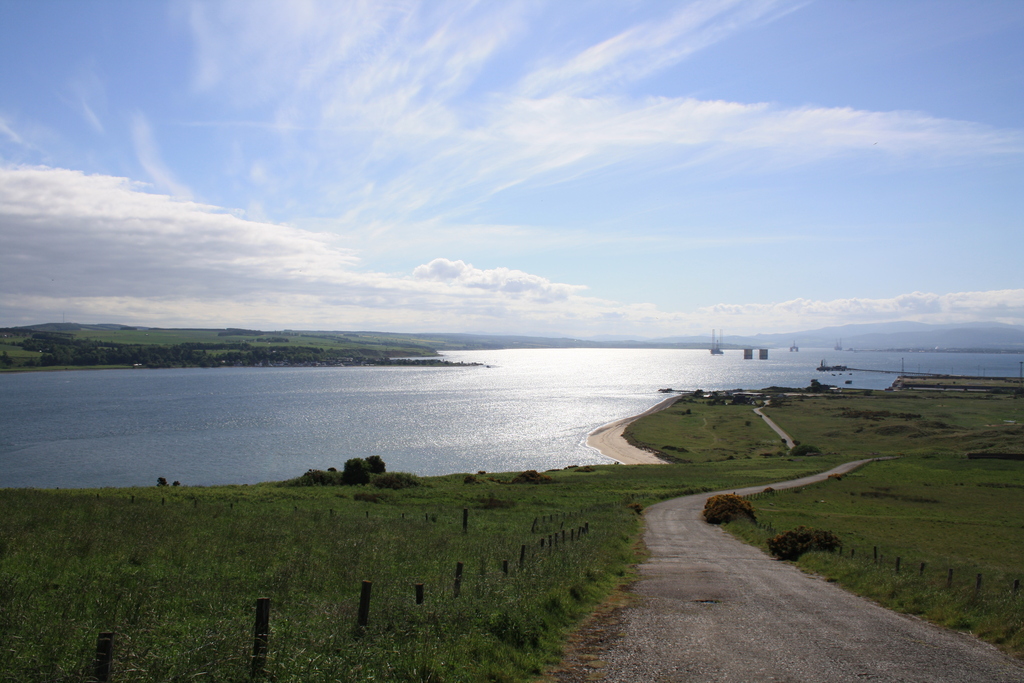
View from hill overlooking Nigg
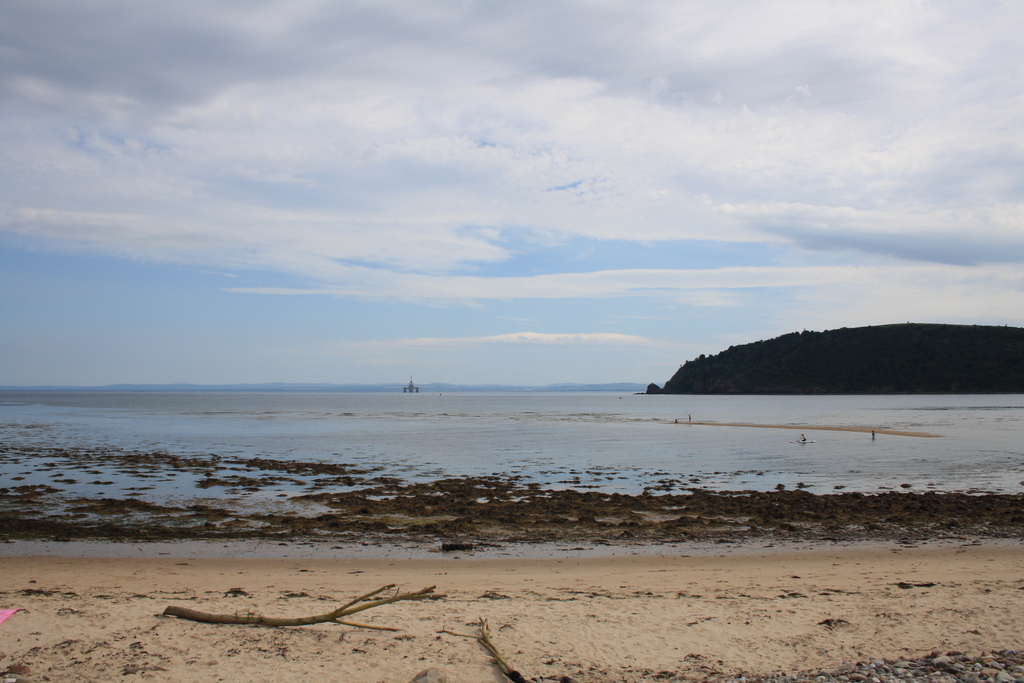
Nigg beach
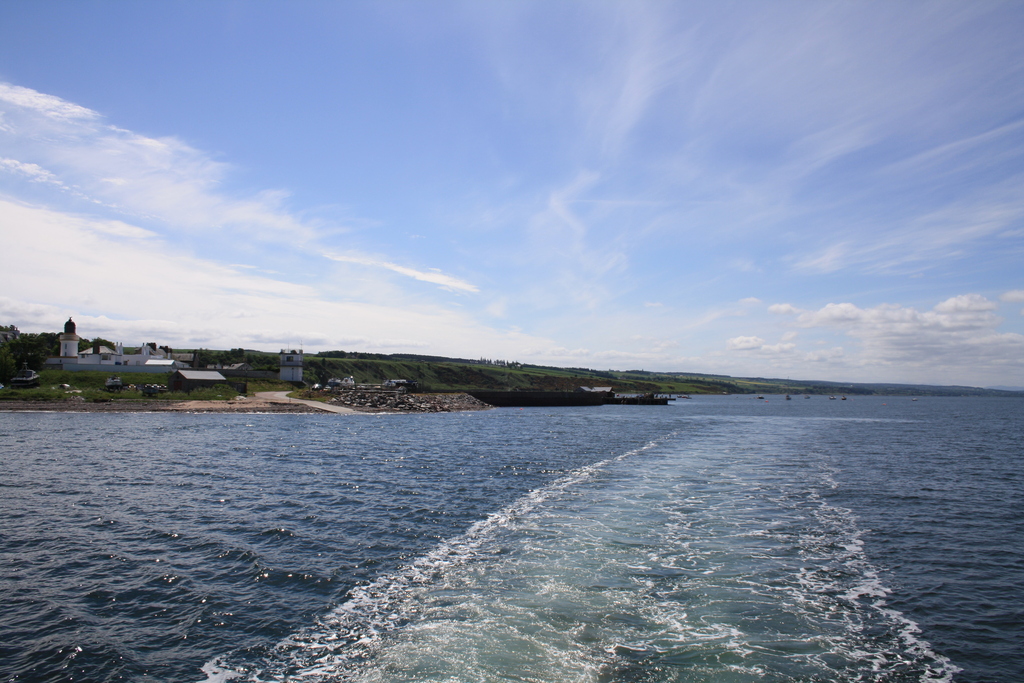
View of Cromarty from Nigg to Cromarty ferry
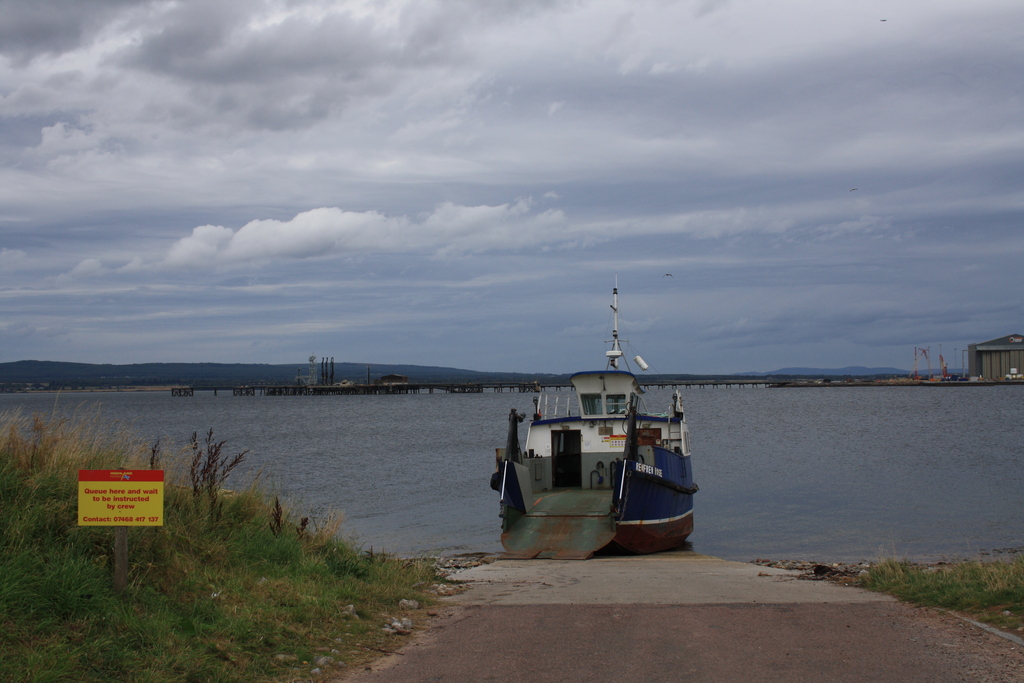
Renfrew Rose ferry at Cromarty
Ardgay
Ardgay station is attractively situated on the shoreline with pleasant views across the Dornoch Firth.
On the opposite shore, 20 minutes' walk away, is the village of Bonar Bridge with its modern but attractive bridge over the Firth giving the village its name.
Both have local services, shops and cafés for the visitor and are set in attractive scenery for bird watching, walking, cycling and photography. We particularly enjoy a macaroni pie from the SPAR shop sitting by the water in Bonar Bridge.
Cyclists and keen walkers may also wish to alight at Ardgay to visit Croick. Some ten miles west of Ardgay along a narrow single track road is Croick Church. Building temporarily closed (September 2025).
The Church is a good example of a ‘parliamentary church’, constructed in 1823. Its simple white walls, plain glass windows and basic hard wooden benches have a certain appeal and remain timeless since its construction.
However, it became famous in 1845 when a Times newspaper reporter visited to expose a scandal that was representative of a shame which was sweeping the Highlands.
Eighty people were living in the churchyard under a home made tarpaulin having being evicted from their homes. Across the Highlands in hard conditions people lived as tenant farmers on small crofts practising subsistence farming.
However, landowners decided to displace them in favour of more profitable sheep grazing and so in the space of a few years cleared the Highlands of thousands of people who had lived in their homes for generations.
The names of those who sheltered at the church may still be seen as they etched their details into the glass panes of the windows providing us today with a tangible link with these people.
These clearances became known as the ‘Highland Clearances’ and are still remembered as one of the most shameful episodes in Scotland’s history.
The Durness Bus service 805 runs from Inverness to Lairg, then to Kinlochbervie and on to Durness on the north west coast.
This service is ideal for walkers and people wishing to get into some of the remotest parts of Scotland. The service stops in Ardgay and in Bonar Bridge but is not timed to meet a particular train service.
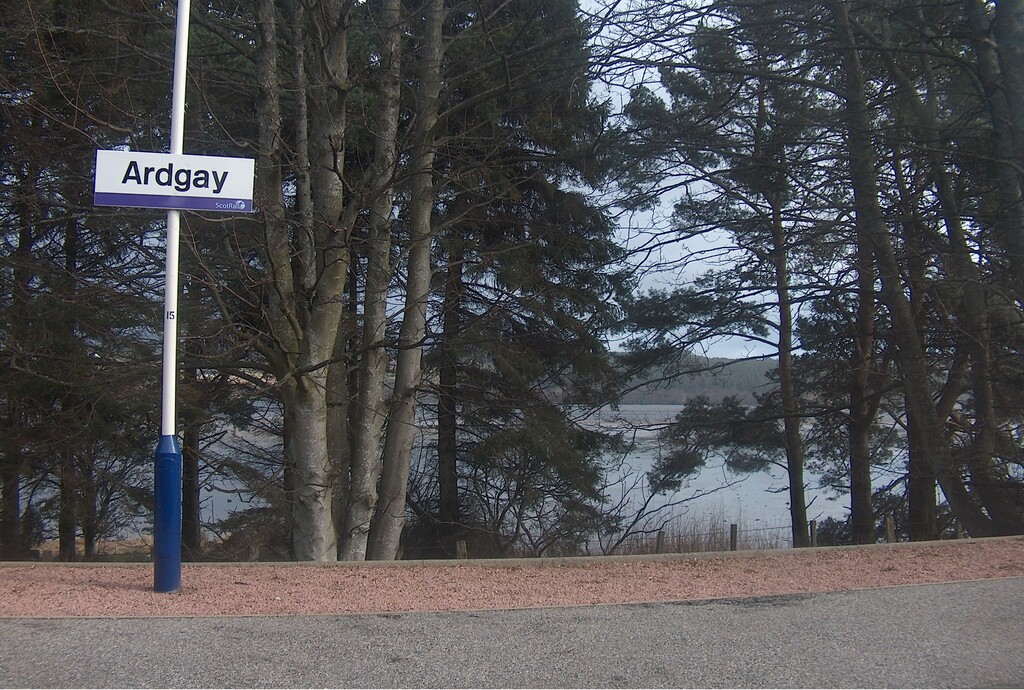
Dornoch Firth seen through the trees
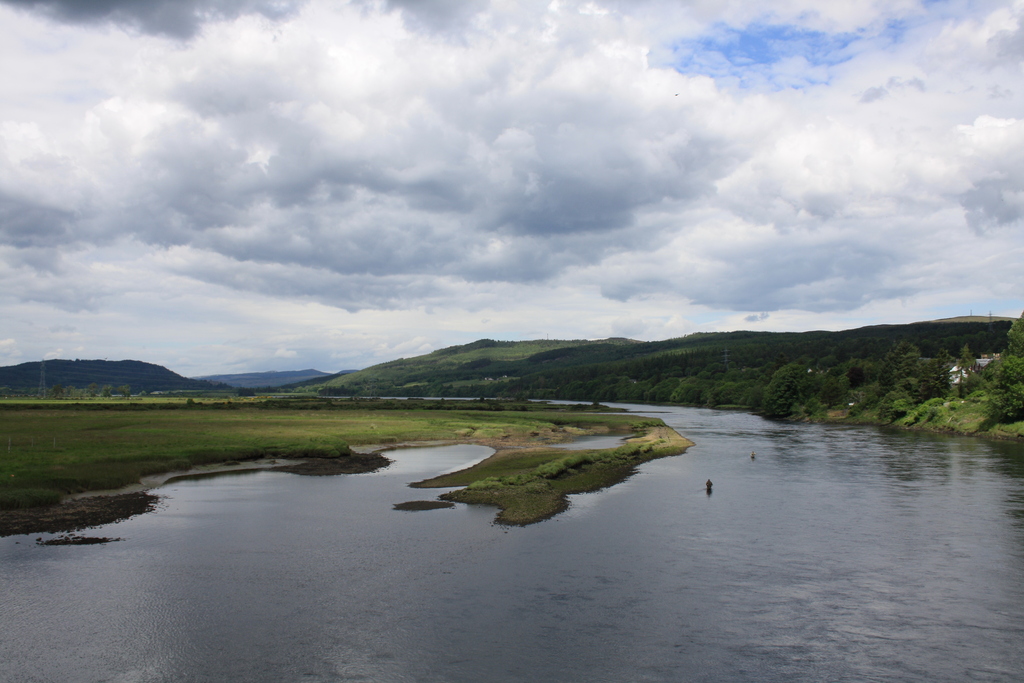
View from bridge at Bonar Bridge
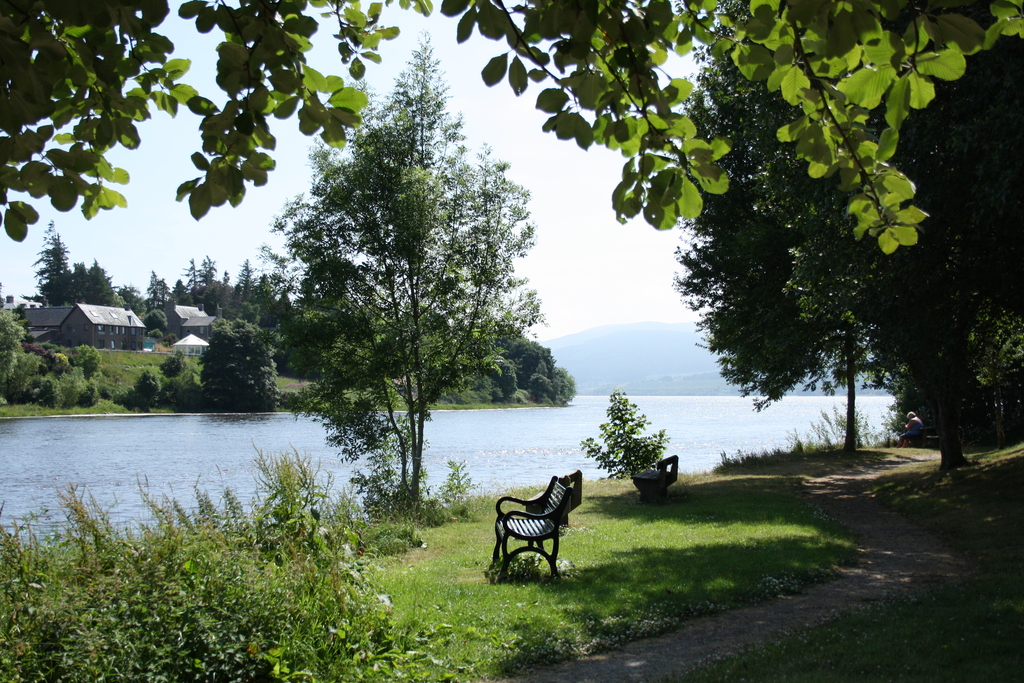
This is where we enjoy a macaroni pie!
Culrain (request)
This halt has a pleasant wooden waiting shelter and is usually decorated with flowers.
A short walk away is Carbisdale Castle which is relatively modern having been constructed between 1907 and 1917 for Mary Caroline Mitchell, Duchess of Sutherland.
It is one of the last of such great houses to have been built. King Haakon VII of Norway and Crown Prince Olav were provided safe refuge at the Castle during Nazi occupation of Norway in World War II.
Shortly afterwards it was gifted to the Youth Hostels Association and opened as such in 1945 until its closure in 2011. Today it is a conference and retreat venue, where it is also possible to book tours and afternoon tea.
Culrain is a wonderful location for hill walking and cycling. There are many tracks to be explored leading in all directions away from the station and Castle.
The ‘Castle Walk’ passes Carbisdale Castle and goes through pleasant mixed woodland and Culrain Burn and some particularly good mature oak trees.
Alternatively the ‘Loch View’ walk leads to an idyllic loch edged with old Scots Pine and then on to a battlefield viewpoint. This fine view east over the Dornoch Firth overlooks the site of the Marquis of Montrose’s last battle in 1650.
Either take a map with you or consult some of the Forestry Commission information boards near the station for walk details. There is also a mountain bike trail starting from the station through Commission woodlands.
Invershin (request)
It is possible to follow a footpath between Culrain and Invershin stations. Use Invershin for walks through Balbair Wood.
There is also a scenic cycle route between Culrain and Lairg stations.
Lairg
Lairg station is not in the village, which is two and a half miles from the station. The small village of Lairg fulfils an important role serving the community in central Sutherland.
It is attractively situated on the shores of Loch Shin. Although the Loch is natural, its height was raised by nine metres when a dam was built next to the village.
Ferrycroft Visitor Centre has a heritage centre with shop, cafe and toilets. There are displays and children’s activities, as well as two walks starting from the centre.
There are longer distance connections from here to the remote north-west coast of Scotland as Lairg is the railhead for the entire north west region. Two bus routes of interest to those wishing to explore this region are available.
Transport for Tongue service 2 meets the train on Wednesdays for the journey through the countryside up to Tongue on the far north coast.
This cross country route travels through one of the most remote parts of Europe, past isolated farmhouses and tiny hamlets. See our Guide to Lairg to Tongue for more details.
The Durness Bus service 805 runs from Inverness to Lairg, then to Kinlochbervie and on to Durness on the north west coast.
This service is ideal for walkers and people wishing to get into some of the remotest parts of Scotland. The service is not timed to meet a particular train service, so you may wish to walk into Lairg and then catch the bus from there.
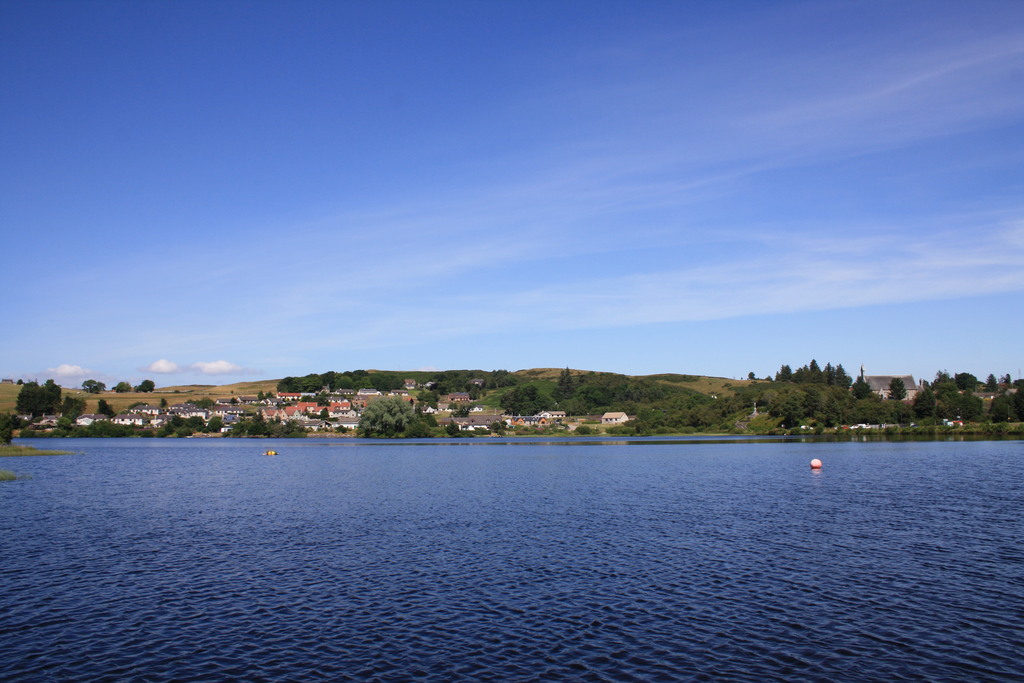
Lairg and Loch Shin
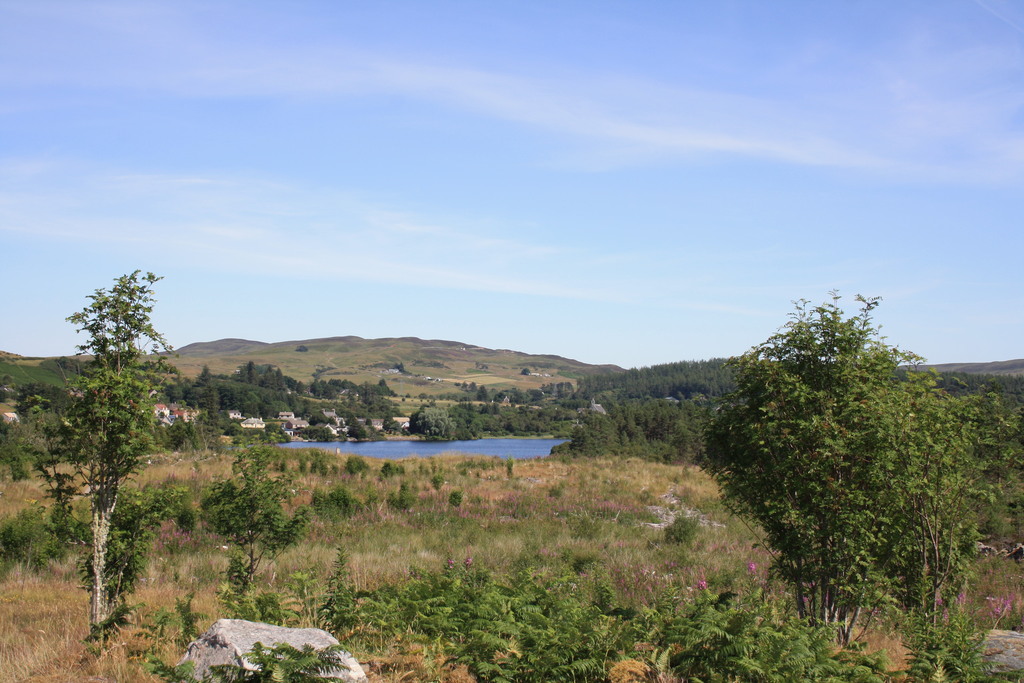
One of the walks from Ferrycroft Visitor Centre
Rogart (request)
The station building is now a house and the garden has become something of an outdoor railway museum with a collection of old trains and other railway items.
The old signal box has been restored and there are a number of old railway carriages which used to run this railway.
Rogart itself is a hill farm village and you can still see the cattle pens which were formerly used for loading sheep onto trains alongside the line.
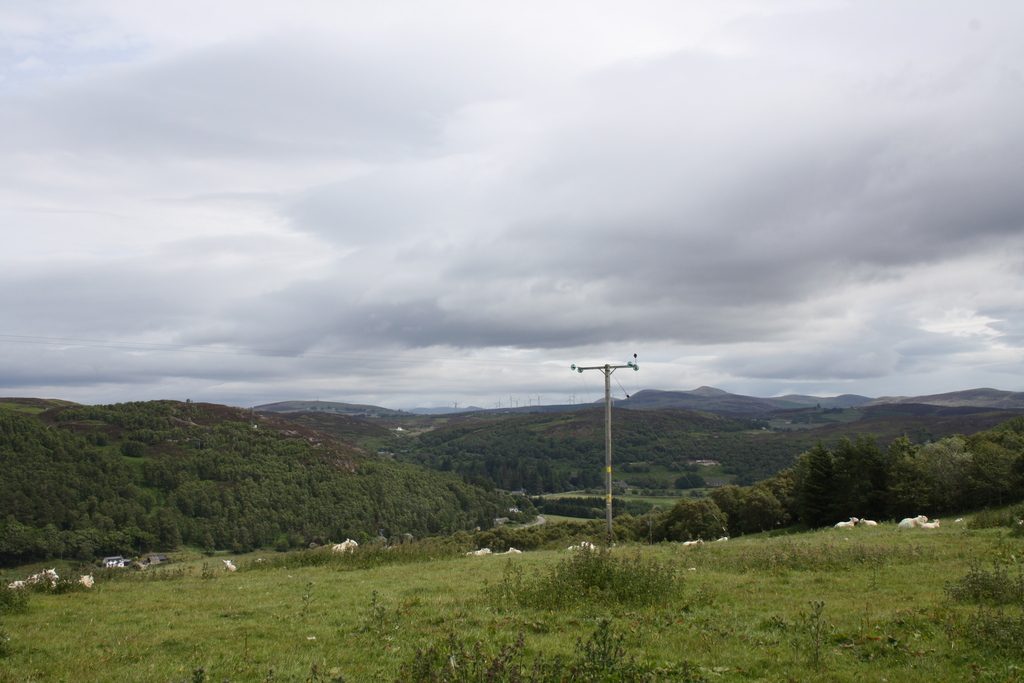
Mountain view in Rogart
Brora
Brora lies on the east coast of Sutherland, in prime golfing country. Brora has two claims to Scottish uniqueness.
It once possessed the only bridge in the region – which gave it its name, meaning River of the Bridge – and until the 1960s, had the only coal mine in the Highlands.
For such a small town in a remote area it is was surprisingly industrialised with a coal pit, boat building, fishing, salt mining, fish curing, lemonade factory, distillery, wool mill, brick making and a stone quarry.
Brick tends to be a building material more commonly found in England and the existence of the factory explains the brick houses in Brora.
A woollen mill survived until recently while the stone from the quarry found its way into buildings as diverse as Liverpool Cathedral, London Bridge and the local Dunrobin Castle.
Nowadays this small town between Dornoch and Wick is a good base for a number of superb golf courses in the area. It is also famous today for being the home of Capaldi’s ice cream. There is also a small sandy beach.
Brora Heritage Centre has displays on local history. Closed for the 2025 season while a new heritage centre is being built.
You can visit the Clynelish Whisky Distillery (25 minutes' walk) which was reopened in 2021 and offers tours and tastings, and the neighbouring Brora Distillery (by appointment only, no walk-in visitors).
Three miles south of Brora is a preserved Iron Age broch, Carn Liath. You can walk there by the coastal path between Brora and Golspie, six miles away. As well as the seals can otters can also sometimes be spotted here.
Helmsdale
The large white station building has been restored and is now self-catering accommodation. The signal box is still on site and is use by Network Rail for communications equipment.
Once this was a very busy station and even had its own engine shed which survived into the days of diesel locomotives.
Helmsdale was chosen as the location for a Scottish ‘Emigrants Statue’ to mark the thousands of people who were evicted from their homes during the Highland Clearances.
Also in Helmsdale is the Timespan Heritage and Art Institution which tells the history of the town and the area. There is a path from the village to Eldrable Hill (416 metres).
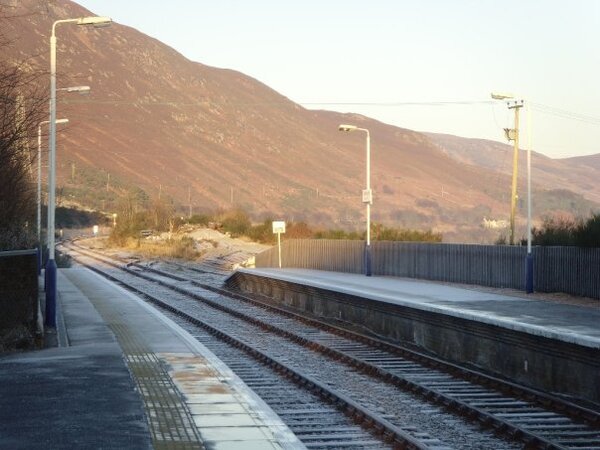
Helmsdale station on a cold March day
Kildonan (request)
Kildonan Station request stop was the scene of a gold rush in 1868 when people flocked to this village to look for gold in the river Kildonan and Suisgill. Some people still try, although there is very little to be found.
Kinbrace (request)
Set in unspoilt countryside the quietness of this small village is especially striking when having just come from a town or village.
Forsinard
Remote hamlet in the heart of The Flow Country with an RSPB Reserve Visitor Centre and viewing tower.
Altnabreac (request)
This request stop is one of the remotest stations in Britain with no road access.
Scotscalder (request)
This request stop station has been restored to 1950s British Railways style as part of its conversion to a holiday home.
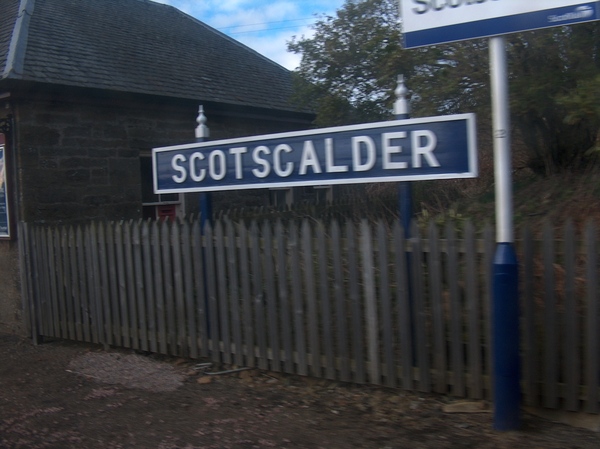
This is the best we've got!
Georgemas Junction
The most northerly junction in Britain still has a station, although now unstaffed. Here you can walk in Sibster, a new broadleaf woodland planted by Forestry and Land Scotland.
There are a couple of trails and good views across Caithness. The forest is 5 minutes' walk from the station on an off road path.
Page last updated 27 September 2025